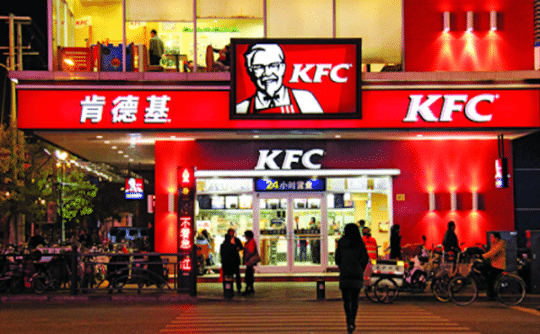With consumers being five times more likely to purchase from a website in their mother tongue, it comes as no surprise that savvy content marketers are turning to marketing localization to meet the needs of foreign markets.
But some businesses make the mistake of translating ads for other countries with machine translating services like Google Translate. Although it may seem like an easy way to save money at first, they end up suffering major losses in the long run.
Let’s take a deeper look at the importance of localization in marketing, the marketing localization process and why sticking with machine translation is never a good idea in the business world.
See also: 5 ways to ensure a quality localization – even if you don’t speak the language
What is marketing localization?

Marketing localization is the process of adapting marketing materials, communication strategies, language and content to coincide with a foreign market’s culture and social norms.
When marketing to your target market in another country, it takes more than translating your message word-for-word into their language. The words, emotions and expressions used in the advertisements need to be rewritten in their language to capture the attention of the audience the same way you would at home. This needs to be done for every market you enter.
See also: Localization strategy: Your guide to engaging a global audience
“The numbers make it clear that creating content in local languages will give us greater reach.”
– Sara Cronsioe, Sweden-based content lead
Why you should invest in quality marketing localization
When you only translate marketing content, you’re missing out on an opportunity to truly grab your audience. The marketing localization process goes beyond basic content and advertising translations and makes your content relevant for each audience.
See also: Translation vs. localization: What’s the difference and why should you care?
Here are a few reasons why you should invest in high-quality localization of content and advertising:
Languages vary by region

Machine translations can’t always recognize how languages differ between regions.
Think about the US and the UK. Although both speak English, they have plenty of differing regional terms, such as french fries vs. chips, pants vs. trousers, and cookies vs. biscuits. If you wrote ad copy that read, “We have the most comfortable trousers around” to an American audience, you might get some strange reactions.
See also: American vs. British English: How they’re different and why it matters
Tailoring your content marketing translations is key to ensuring your message resonates with your audience. This requires being aware of their regional terms, spellings and dialects. While sometimes these differences between countries seem subtle, they can mean winning over your audience in another country or losing them entirely. Work with a local translator or native speaker who can localize your content by dialect.
Marketing in Europe means tailoring our messages. We can’t convince people to believe in what we’re doing in the same way in different countries.
– Evgeni Hristov, Netherlands-based marketing & communications manager
You have to consider cultural nuances

Advertising and marketing in other countries requires more than translating your ad into their language—you need to be well aware of their cultural differences. Your marketing team or the professional translation agency you hire should perform thorough research on your target audience’s culture.
You’re better off having marketing content translated by professionals who speak the native language of your target market fluently. This makes it easier for them to navigate the cultural nuances and social norms of the country you’re targeting.
See also: Native language marketing: The benefits of local knowledge
Marketing localization includes checking if the designs, images, colors and fonts respect the traditions and customs of your target market. For example, Western cultures view the color white as peaceful, pure and elegant, whereas in China it’s associated with death and worn at funerals. Don’t make the mistake of offending or confusing your target audience, or you might lose their business altogether.
Remember, an advertisement in the US might be considered inappropriate or offensive in another country and the other way around. Tread lightly before thinking about using the exact same marketing and advertising overseas.
Images tell a story, and they can tell a different story in different markets—you need to make them resonate with your users.
– Anne-Sophie Delafosse, localization manager at Deliveroo
It can lead to expensive PR problems

Using machine translation for your advertisements can lead to embarrassing translation mistakes, which will leave you with expensive PR issues.
KFC experienced this firsthand in Beijing, China in the 1980s. They translated their popular English slogan “Finger-lickin’ good” to Chinese characters and ended up with a slogan that said “Eat your fingers off.” People weren’t impressed with this disturbing message displayed on the outside of the restaurant. It took major localizing to the Chinese culture for KFC to earn back their trust.

Foreign audiences see translation mistakes as a sign your brand doesn’t care about their community. You have to earn their trust before they buy, which means you need to become an expert in their culture. Understanding their cultural nuances and social norms is essential to avoiding any miscommunication that could hurt your brand’s reputation and affect sales.
See also: 12 multilingual social media tips that really work
Expressions can get lost in translation
Machine translation doesn’t understand idioms, tone, humor, slang, puns or metaphors. It breaks down the words and structure of the original text into sections and changes them into the target language. If the target language is complex, machine translation can’t understand it.
Imagine using a well-known expression or slang term in your advertisement that might mean something completely different in another language or simply mean nothing at all. These mistakes happen—and audiences have a hard time forgiving them.
Unlike machines, humans are able to translate marketing content that understands and conveys the context of a source text. However, it requires a skilled translator to transcreate marketing content. This means they completely rewrite your message in the target language, while still maintaining the tone, intent and context of the source text. By transcreating your ad, you can make sure it performs well in your target market.
See also: What is creative translation? Everything you need to know
How can marketing localization help your business?
It builds trust with your audience
Marketing localization is vital to winning over your international audience.
Studies have shown 72.4% of consumers said they would be more likely to purchase a product with information in their own language. Foreign consumers believe a brand cares about its customers and their needs when they create customized advertising for their country.
Localizing your content lets you engage your customers on an emotional level and make them feel comfortable with your brand, which ultimately builds your customer base and leads to sales.
See also: How to localize your content for more effective marketing in Europe
“How do you build trust? There are many pieces to the puzzle, but language and localization are two big parts of it.”
– Jordanna Ber, Spain-based head of localization
KFC becomes a hit in China

Although KFC made a translation blunder in the past, they bounced back with impressive advertising and marketing localization. Advertisements at KFCs in China feature traditional Chinese dress, Chinese characters, and innovative Chinese dishes like “sushirittos” (a sushi roll filled with their famous chicken).
Their menu also includes traditional Chinese dishes, including congee, rice dishes, and local sauces. Thanks to these changes, they’ve become extremely successful, generating almost $5 billion in China in 2017 and boasting over 5,600 locations in the country alone.
See also: Glocalization: what it means and which brands are doing it best
Coca Cola wins over Chinese audiences

Another great example of marketing localization is Coca Cola’s “Share a Coke” campaign that launched in 2013 and 2014. For this campaign, the Coca Cola logo on the label of the bottles was replaced with common names in each country. People all over the world felt touched that they could find their names on a bottle of coke, which led to the easy decision to purchase from them.
Coca Cola was particularly smart with its marketing localization of the campaign in the Chinese market. In China, it’s disrespectful to call someone by their first name. People are normally addressed by their surname followed by honorific titles. Since the campaign focused on personal connection, they used terms like “close friend” and “classmate” on the bottles in China. This fix allowed Coca Cola to stick to the theme of the marketing campaign, while respecting Chinese culture and increasing customer engagement.
See also: 5 global marketing strategies to inspire you in 2022
Increases brand awareness and sales
According to research by Appia, 86% of localized content marketing campaigns outperformed English campaigns both in click-through rates and conversion rates. Consumers have spoken—they want to see advertisements in their own language.
Localized advertising allows your brand to be exposed to international audiences. The more people are aware of your business, the more likely they are to purchase from you and tell their friends and family to as well.
Apple localizes ads in Japan
Apple did a fantastic job increasing brand awareness in Japan with advertising localization. In the past, they had a series of successful commercials in North America that mocked their direct competitor’s computers. Americans found the commercials hilarious and came to think of Apple’s products as high-end and fashionable in comparison to Microsoft’s PCs.
However, Apple recognized this commercial wouldn’t do so well in Japan where openly criticizing a rival is seen as distasteful. Apple shifted their commercial to fit Japanese audiences by using actors from Rahmens, a popular comedy troupe. The actors framed PCs as a product used for professionals in offices and Mac computers for fun. Japanese audiences loved the commercials. If Apple didn’t localize this advertisement, the commercials could have easily offended foreign customers.
See also: The importance of quality content: What it is and why it matters
How does Google Ads localization work?
Localized marketing doesn’t just apply to your social media and website marketing, but to your PPC campaigns too.
Geotargeting is the process of targeting your Google Ads to specific locations. This helps you ensure that you don’t waste your marketing budget on clicks from people outside of your target market. Plus, it allows you to translate ad text and imagery to cater to each local market.
You can also run localized ads on your social channels targeting different audiences—even if you don’t have local social media accounts for each region! For example, you can run a Facebook ad in French targeting a French audience even if you don’t have a localized French Facebook page and the ad won’t appear on your main feed.
See also: Multilingual copywriting: Adapting your ads for new markets
Reach your target audience with localized marketing
By localizing messages for their target audience, businesses can achieve their marketing goals in other countries and reap the benefits of having a loyal customer base in a foreign market.
But remember, localization is more than simple ad translations. Successful content marketing translation involves understanding your audience and adapting your messaging and images to make it relatable both in terms of language and culture.
Need help with marketing localization for your business? Reach out to us today !
For more on marketing localization, check out these posts:
- How to localize your website and why it matters
- SEO localization for multilingual websites: What is it and why is it necessary?
- US vs. German marketing content: Why localization is key

